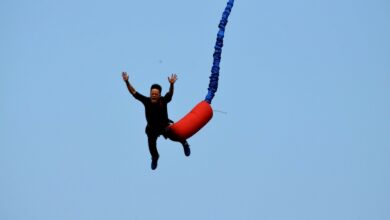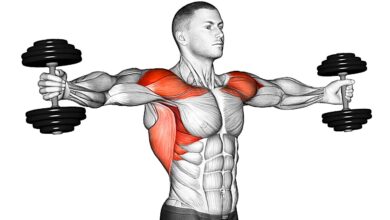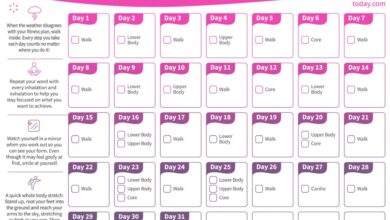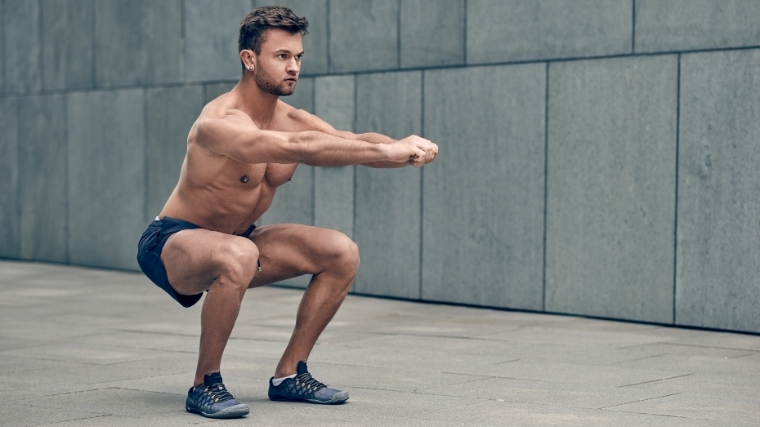
Fitness Basics: Bodyweight Training for Everyone
Fitness basics bodyweight training – it’s a simple phrase that holds a world of possibilities. Forget fancy equipment and expensive gym memberships. Bodyweight training is all about using your own body as resistance, making it accessible and convenient for anyone, anywhere.
It’s a powerful tool for building strength, endurance, and flexibility, no matter your fitness level.
From classic push-ups and squats to more advanced moves like handstands and muscle-ups, bodyweight training offers a diverse range of exercises that target all major muscle groups. It’s a versatile approach that can be tailored to your individual goals, whether you’re a beginner just starting out or a seasoned athlete looking for a new challenge.
Introduction to Bodyweight Training
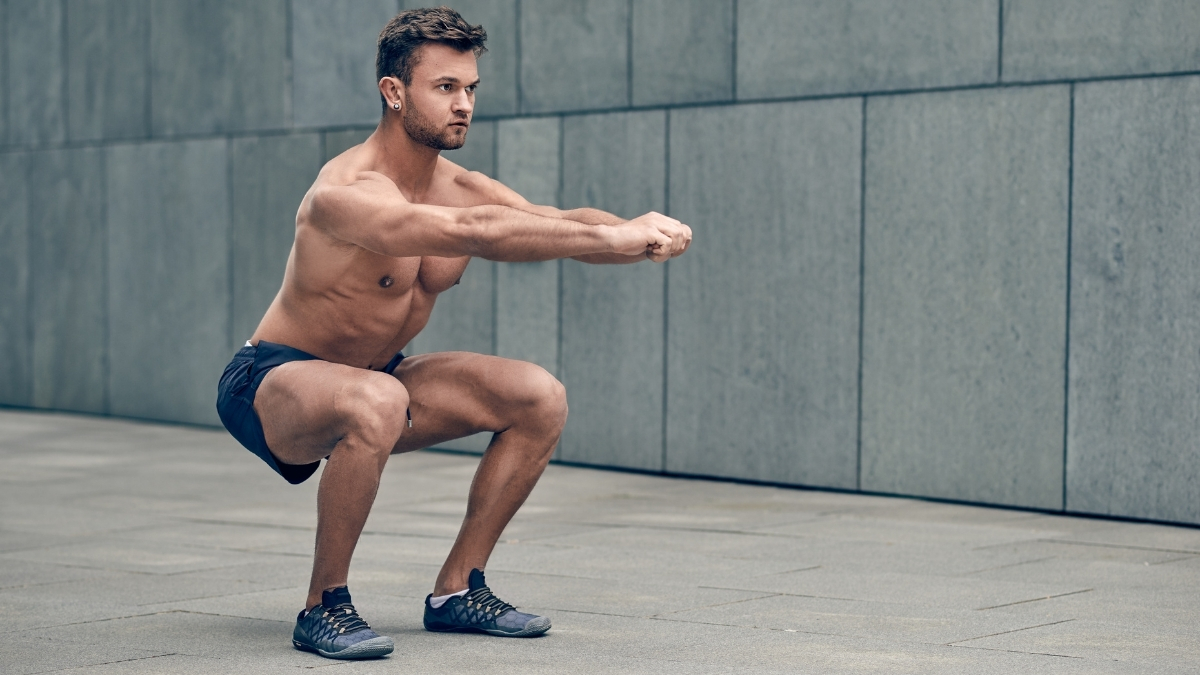
Bodyweight training is a form of exercise that uses your own body weight as resistance. It’s a highly effective and accessible way to improve your overall fitness, build muscle, and enhance your strength, endurance, and flexibility.
Benefits of Bodyweight Training
Bodyweight training offers numerous benefits for your physical and mental well-being.
- Improved Strength and Muscle Mass:Bodyweight exercises effectively engage multiple muscle groups simultaneously, promoting overall strength and muscle growth. For instance, squats target the quadriceps, hamstrings, glutes, and core, while push-ups engage the chest, shoulders, and triceps.
- Enhanced Endurance and Cardiovascular Health:Bodyweight exercises often involve dynamic movements that elevate your heart rate and improve your cardiovascular fitness. For example, burpees and mountain climbers are excellent for boosting your endurance and cardiovascular health.
- Increased Flexibility and Mobility:Many bodyweight exercises, such as yoga and Pilates, emphasize flexibility and mobility, improving your range of motion and reducing the risk of injuries.
- Improved Body Composition:Bodyweight training can help you build lean muscle mass and burn calories, leading to a healthier body composition.
- Accessibility and Convenience:Bodyweight training requires no special equipment, making it accessible to everyone, regardless of their fitness level or budget. You can perform these exercises anytime, anywhere, making it convenient to incorporate into your daily routine.
Common Bodyweight Exercises
Bodyweight exercises target various muscle groups and offer a wide range of difficulty levels. Here are some common examples:
- Upper Body:
- Push-ups:Targets the chest, shoulders, and triceps.
- Pull-ups:Works the back, biceps, and forearms.
- Dips:Focuses on the triceps and chest.
- Plank:Strengthens the core muscles, including the abdomen, lower back, and obliques.
- Lower Body:
- Squats:Targets the quadriceps, hamstrings, and glutes.
- Lunges:Works the quadriceps, hamstrings, glutes, and calves.
- Calf Raises:Strengthens the calf muscles.
- Full Body:
- Burpees:A high-intensity exercise that engages multiple muscle groups.
- Mountain Climbers:A dynamic exercise that targets the core, legs, and shoulders.
- Jump Squats:A plyometric exercise that improves power and explosiveness.
Fundamental Bodyweight Movements
Bodyweight training relies on a foundation of fundamental movement patterns, these are the core actions that your body naturally performs. Mastering these patterns forms the basis of a strong, functional physique.
Push Movements
Push movements involve extending your limbs against resistance, primarily targeting your chest, shoulders, and triceps. These movements are essential for everyday activities like pushing open doors, lifting objects, and even getting out of a chair.
- Push-ups:A classic exercise that engages your chest, shoulders, and triceps. Variations like incline push-ups (hands elevated) and decline push-ups (feet elevated) target different muscle groups.
- Handstand Push-ups:A highly advanced exercise that targets your shoulders and triceps. This movement requires significant upper body strength and stability.
- Dips:A compound exercise that works your chest, shoulders, and triceps. Dips can be performed on parallel bars or using a dip station.
Pull Movements
Pull movements involve drawing your limbs towards your body, primarily targeting your back, biceps, and forearms. These movements are essential for pulling objects, reaching for items, and maintaining good posture.
- Pull-ups:A challenging exercise that engages your back, biceps, and forearms. Variations like chin-ups (palms facing you) and wide-grip pull-ups (hands wider than shoulder-width) target different muscle groups.
- Rows:A versatile exercise that can be performed with various hand positions and angles. Rows target your back and biceps.
- Inversion Rows:An advanced exercise that targets your back and biceps. Inversion rows can be performed by hanging from a bar with your feet elevated.
Squat Movements
Squat movements involve lowering your hips towards the ground, primarily targeting your quads, glutes, and hamstrings. These movements are essential for everyday activities like sitting down, standing up, and walking.
- Squats:A fundamental exercise that engages your quads, glutes, and hamstrings. Variations like goblet squats (holding a weight in front of your chest) and pistol squats (one leg at a time) challenge your balance and stability.
- Lunges:A unilateral exercise that targets your quads, glutes, and hamstrings. Lunges can be performed forward, backward, or laterally.
- Bulgarian Split Squats:An advanced exercise that targets your quads, glutes, and hamstrings. Bulgarian split squats are performed with one foot elevated on a bench or platform.
Hinge Movements
Hinge movements involve bending at the hips, primarily targeting your glutes, hamstrings, and lower back. These movements are essential for everyday activities like bending over to pick something up, reaching for something on a high shelf, and maintaining good posture.
- Deadlifts:A powerful exercise that engages your glutes, hamstrings, and lower back. Deadlifts can be performed with various hand positions and angles.
- Good Mornings:A challenging exercise that targets your glutes, hamstrings, and lower back. Good mornings can be performed with or without weights.
- Romanian Deadlifts:A variation of the deadlift that targets your glutes and hamstrings. Romanian deadlifts are performed with a slight bend in your knees.
Core Movements
Core movements involve engaging your abdominal muscles and stabilizing your spine. These movements are essential for maintaining good posture, preventing injuries, and improving overall athleticism.
- Plank:A static exercise that engages your entire core. Variations like side planks and high planks target different muscle groups.
- Crunches:A classic exercise that targets your abdominal muscles. Variations like reverse crunches and bicycle crunches target different muscle groups.
- Leg Raises:A challenging exercise that targets your lower abdominal muscles. Leg raises can be performed with straight or bent legs.
Importance of Proper Form and Technique
Proper form and technique are paramount in bodyweight training. Performing exercises with correct form ensures that you are targeting the right muscles, maximizing your results, and minimizing your risk of injury.
Proper form and technique are crucial in bodyweight training. They ensure that you are targeting the right muscles, maximizing your results, and minimizing your risk of injury.
Nutrition for Bodyweight Training: Fitness Basics Bodyweight Training
You’ve mastered the fundamentals of bodyweight training, but there’s one crucial element often overlooked: nutrition. Just like a car needs fuel to run, your body needs the right nutrients to perform at its peak. Proper nutrition is essential for building muscle, recovering from workouts, and maximizing your bodyweight training potential.
Macronutrient Intake for Bodyweight Training
Understanding macronutrients is crucial for optimizing your diet. Macronutrients are the building blocks of your diet, providing energy and supporting various bodily functions. They include carbohydrates, proteins, and fats.
- Carbohydrates:Your primary energy source, especially during intense workouts. Aim for 40-50% of your daily calories from complex carbohydrates like whole grains, fruits, and vegetables.
- Proteins:Essential for muscle growth and repair. Aim for 0.8-1.2 grams of protein per pound of body weight daily. Good sources include lean meats, poultry, fish, eggs, dairy products, and legumes.
- Fats:Crucial for hormone production, cell function, and energy storage. Aim for 20-30% of your daily calories from healthy fats like avocados, nuts, seeds, and olive oil.
Meal Timing for Bodyweight Training, Fitness basics bodyweight training
The timing of your meals can significantly impact your performance and recovery.
- Pre-workout:A light meal or snack 1-2 hours before your workout, focusing on easily digestible carbohydrates and a moderate amount of protein, helps provide energy and fuel your muscles. Examples include a banana with peanut butter, a handful of almonds, or a small bowl of oatmeal.
- Post-workout:A meal or snack within 30-60 minutes after your workout, rich in protein and carbohydrates, helps repair muscle tissue and replenish glycogen stores. Examples include a protein shake with fruit, a chicken breast with brown rice, or a Greek yogurt with berries.
Fueling Your Bodyweight Workouts
Your diet plays a crucial role in fueling your bodyweight workouts.
- Hydration:Water is essential for performance and recovery. Drink water throughout the day and especially before, during, and after your workouts.
- Electrolytes:Electrolytes, like sodium, potassium, and magnesium, are lost through sweat during workouts. Replenishing them with sports drinks or electrolyte-rich foods can prevent cramping and fatigue.
- Pre-workout snacks:A small snack 30-60 minutes before your workout can provide sustained energy. Examples include a banana, a handful of almonds, or a protein bar.
Recovery Nutrition
Proper nutrition is crucial for muscle recovery and growth after your bodyweight training sessions.
Bodyweight training is all about pushing your limits, and sometimes that means facing those moments where you just want to give up. That’s where the mental game comes in! Learning some mental tricks to get through tough workouts can be a game-changer for your bodyweight training journey.
By mastering your mindset, you’ll unlock a whole new level of strength and resilience, allowing you to conquer those challenging sets and push your body to new heights.
- Post-workout protein:Consuming protein within 30-60 minutes after your workout helps repair muscle tissue and promote growth. Examples include a protein shake, grilled chicken, or a Greek yogurt.
- Carbohydrates for glycogen replenishment:Carbohydrates are essential for replenishing glycogen stores depleted during your workout. Examples include sweet potatoes, brown rice, or whole-grain bread.
- Sleep:Adequate sleep is vital for muscle recovery and hormone regulation. Aim for 7-9 hours of quality sleep per night.
Common Bodyweight Training Mistakes
Bodyweight training is a great way to get fit, but it’s important to do it correctly to avoid injuries and maximize results. Many common mistakes can hinder your progress or even lead to injury. Here are some of the most common mistakes and how to avoid them.
Incorrect Form
Proper form is crucial in bodyweight training, just as it is in any other form of exercise. It helps ensure that you are targeting the correct muscles, minimizing the risk of injury, and maximizing the effectiveness of your workout. When form breaks down, it can lead to several problems.
- Increased risk of injury:Incorrect form can put unnecessary stress on your joints and muscles, increasing your risk of strains, sprains, and other injuries. For example, performing a push-up with a rounded back can put excessive stress on your lower back, leading to pain and potential injury.
- Reduced muscle activation:When you don’t use proper form, you may not be fully engaging the target muscles, reducing the effectiveness of the exercise. For example, performing a squat with your knees caving inward can reduce the activation of your glutes and hamstrings, making the exercise less effective.
- Decreased range of motion:Incorrect form can limit your range of motion, preventing you from fully benefiting from the exercise. For example, performing a pull-up with a half-range of motion may not effectively work your lats and biceps.
To avoid these problems, focus on maintaining proper form throughout each exercise. Watch videos and seek guidance from qualified trainers to ensure you understand the correct form for each exercise.
Bodyweight training is a fantastic way to build strength and endurance without needing fancy equipment. It’s all about using your own body weight to challenge your muscles. But while you’re working out, you might wonder if simply standing burns enough calories to help with weight loss.
Well, the answer isn’t as straightforward as you might think. Check out this article: does standing burn enough calories to aid weight loss. While standing burns more calories than sitting, it’s not a magic bullet for weight loss.
However, incorporating bodyweight exercises like squats, lunges, and push-ups into your routine will definitely help you achieve your fitness goals.
Bodyweight Training Variations and Progressions
Bodyweight training is versatile and adaptable, allowing you to modify exercises for different skill levels and goals. By understanding the progression from easier to more challenging exercises, you can consistently challenge yourself and achieve your fitness objectives.
Variations of Common Bodyweight Exercises
There are numerous ways to modify common bodyweight exercises to increase or decrease difficulty. These variations allow you to target specific muscle groups, enhance range of motion, and improve overall strength and stability.
- Push-Ups:
- Wall Push-Ups:A beginner-friendly variation that reduces the load on the upper body by using a wall for support.
- Knee Push-Ups:A modified version where you place your knees on the ground, making it easier than a standard push-up.
- Inclined Push-Ups:Performed with your hands elevated on a bench or box, reducing the difficulty compared to a standard push-up.
- Decline Push-Ups:Performed with your feet elevated on a bench or box, increasing the difficulty by increasing the leverage required.
- Diamond Push-Ups:A challenging variation where your hands are close together, targeting the triceps muscles.
- Clap Push-Ups:An advanced variation that requires explosiveness and power to clap your hands together at the top of the push-up.
- Squats:
- Wall Squats:A beginner-friendly variation where you stand facing a wall with your feet shoulder-width apart and slowly squat down until your back touches the wall.
- Chair Squats:Similar to wall squats, but you use a chair for support.
- Goblet Squats:A variation where you hold a weight close to your chest, which helps improve form and stability.
- Pistol Squats:An advanced variation where you squat on one leg while keeping the other leg straight in front of you.
- Lunges:
- Walking Lunges:A basic variation where you step forward with one leg and lower your body until your front knee is bent at a 90-degree angle.
- Reverse Lunges:A variation where you step backward with one leg and lower your body until your back knee is bent at a 90-degree angle.
- Lateral Lunges:A variation where you step sideways with one leg and lower your body until your front knee is bent at a 90-degree angle.
- Plank:
- Forearm Plank:A basic variation where you rest your forearms on the ground and hold your body in a straight line.
- High Plank:A variation where you rest your hands on the ground, similar to a push-up position.
- Side Plank:A variation where you rest your forearm and elbow on the ground and lift your body off the floor, engaging your core muscles.
Progression from Easier to More Challenging Exercises
As you get stronger and more comfortable with bodyweight exercises, you can gradually progress to more challenging variations. This progression helps prevent injuries and ensures that you are continuously challenging yourself.
- Increase Reps:Start by increasing the number of repetitions you perform for each exercise.
- Increase Sets:As you get stronger, you can increase the number of sets you perform for each exercise.
- Decrease Rest Time:Reduce the amount of time you rest between sets to increase the intensity of your workout.
- Add Resistance:You can add resistance to bodyweight exercises by using weights, resistance bands, or even your own bodyweight.
- Change Exercise Variation:As you get stronger, you can move on to more challenging variations of exercises, such as going from knee push-ups to standard push-ups or from wall squats to regular squats.
Advanced Bodyweight Exercises
For experienced individuals, advanced bodyweight exercises can provide a challenging and effective workout. These exercises require a high level of strength, coordination, and balance.
Bodyweight training is a fantastic way to build strength and endurance, and it’s accessible to everyone. You can do it anywhere, anytime, with no equipment needed. While you’re focusing on fitness, don’t forget about healthy eating! Check out this great article on superfoods to use in holiday dishes to keep your meals nutritious and delicious.
After all, fueling your body with good food is just as important as moving it. So, get out there, get moving, and enjoy the benefits of bodyweight training!
- Muscle-Ups:A combination of a pull-up and a dip, requiring significant upper body strength.
- Handstand Push-Ups:A challenging variation of a push-up performed in a handstand position.
- Front Lever:A static exercise where you hold your body in a horizontal position with your arms extended.
- Human Flag:A static exercise where you hold your body in a vertical position with your arms extended.
Bodyweight Training for Specific Goals
Bodyweight training is a versatile form of exercise that can be tailored to meet a wide range of fitness goals. Whether you’re looking to build strength, gain muscle, improve endurance, or increase flexibility, bodyweight exercises can help you achieve your desired results.
Bodyweight Training for Strength
Bodyweight training is an effective way to build strength, as it engages multiple muscle groups simultaneously. To build strength through bodyweight training, focus on compound exercises that challenge your entire body. Examples of compound exercises include push-ups, squats, lunges, pull-ups, and dips.
As you get stronger, you can increase the difficulty of these exercises by adding variations or progressions.
Bodyweight Training for Hypertrophy
Hypertrophy, or muscle growth, can be achieved through bodyweight training by focusing on exercises that target specific muscle groups. This involves using a range of exercises, including isolation movements, to stimulate muscle protein synthesis. Examples of isolation exercises include bicep curls, tricep dips, and calf raises.
To maximize hypertrophy, ensure that you’re using proper form and challenging your muscles with enough resistance.
Bodyweight Training for Endurance
Bodyweight training can also be used to improve endurance by performing exercises for extended periods or with higher repetitions. To improve endurance, focus on exercises that engage large muscle groups and that can be performed for extended periods. Examples of endurance exercises include burpees, mountain climbers, and jump squats.
Aim to increase the duration or the number of repetitions you can perform over time.
Bodyweight Training for Flexibility
Bodyweight training can also be used to improve flexibility. This involves incorporating exercises that focus on stretching and increasing range of motion. Examples of flexibility exercises include yoga poses, dynamic stretches, and static stretches. Incorporating these exercises into your routine can help to improve joint mobility, reduce the risk of injury, and improve overall fitness.
Resources for Bodyweight Training
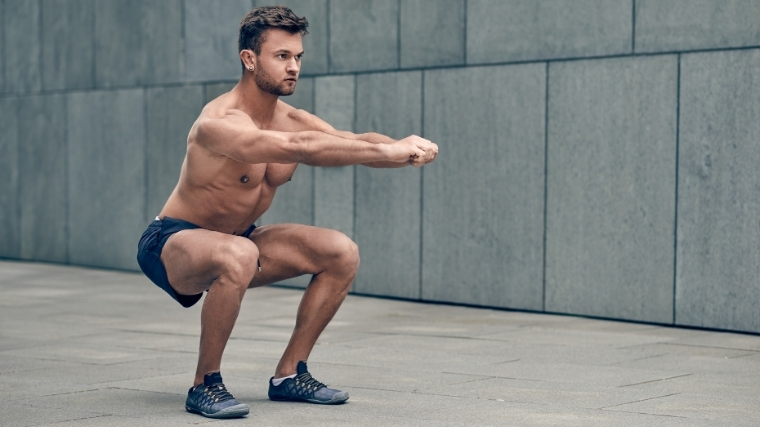
The journey of mastering bodyweight training is enriched by a wealth of resources that can guide you, inspire you, and provide invaluable support. From online communities to insightful books, a diverse range of resources exists to empower you on your fitness journey.
Online Resources and Communities
Online platforms offer a dynamic and interactive space to connect with fellow bodyweight enthusiasts, learn from experienced trainers, and stay motivated.
- Online Forums:Online forums, such as Reddit’s r/bodyweightfitness, provide a platform for sharing experiences, asking questions, and receiving advice from a community of bodyweight training enthusiasts.
- YouTube Channels:Numerous YouTube channels, like FitnessFAQs, offer tutorials, routines, and expert insights on bodyweight training.
- Social Media Groups:Social media platforms like Facebook and Instagram host groups dedicated to bodyweight training, facilitating discussions, sharing progress, and offering encouragement.
Books and Articles
Books and articles provide in-depth knowledge and practical guidance on bodyweight training principles, techniques, and progressions.
- “Convict Conditioning” by Paul Wade:This book presents a comprehensive approach to bodyweight training, focusing on strength and functional movements.
- “The Naked Warrior” by Pavel Tsatsouline:This book explores the principles of natural movement and strength development through bodyweight exercises.
- “Bodyweight Strength Training Anatomy” by Bret Contreras:This book delves into the anatomy and biomechanics of bodyweight exercises, offering detailed explanations and visual representations.
- Online Articles:Websites like Nerd Fitness and T Nation offer a wealth of articles on bodyweight training, covering topics like exercise variations, training programs, and nutrition.
Seeking Guidance from a Qualified Fitness Professional
While online resources and self-study are valuable, seeking guidance from a qualified fitness professional can significantly enhance your progress and minimize the risk of injury.
- Personalized Training Plans:A fitness professional can create a personalized training plan tailored to your goals, fitness level, and any limitations.
- Proper Form and Technique:They can provide expert guidance on proper form and technique, ensuring efficient and safe execution of exercises.
- Injury Prevention:They can help you identify potential risks and implement strategies to prevent injuries.
- Motivation and Accountability:Having a professional to guide and support you can boost your motivation and accountability.
Ultimate Conclusion
So, ditch the excuses and embrace the power of your own body. Bodyweight training is a journey of self-discovery, where you’ll learn to push your limits, build confidence, and unlock your true fitness potential. It’s a simple yet effective way to achieve a stronger, healthier, and more capable you.
Ready to get started? Let’s dive in!

